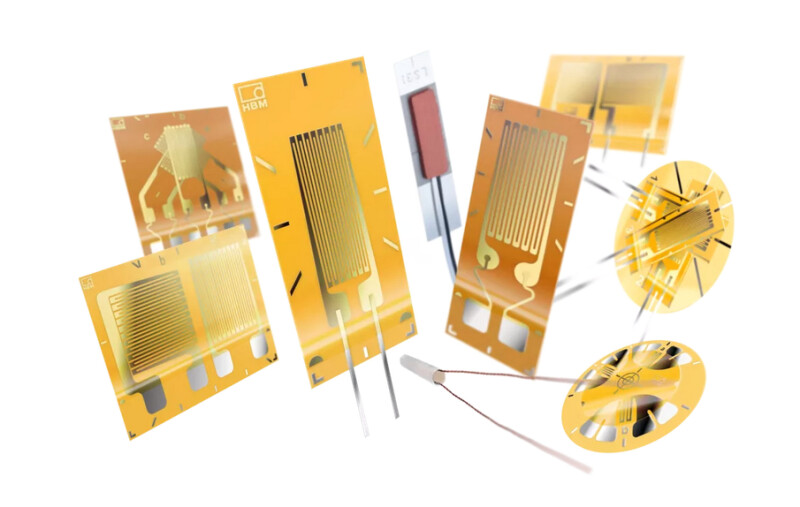HBK - Hottinger Brüel & Kjaer (Germany) - Interview with Constantine Pilapil, OEM Custom Sensor Engineer.
Meet Constantine Pilapil, an OEM Custom Sensor Engineer and passionate mountain e-bike enthusiast. In this exclusive interview, we dive into the integration of strain gauges in e-bike pedals and cranksets. Constantine highlights how these gauges, measuring force and torsion, enhance pedal assist systems in real-time, providing a seamless, tailored riding experience.
Strain gauges not only boost functionality but also monitor performance and improve e-bike capabilities. Cyclists can track their effort, optimize training, and fine-tune the electric assist system. These sensors may also detect and manage cargo loads, enhancing safety.
The integration of electronics, including power meters, further refines data collection and analysis. Riders benefit from customizable settings and battery health monitoring.
Manufacturers gain advantages such as optimized frames and simplified production, ultimately elevating the user experience. Join us in this insightful conversation at the intersection of engineering and e-biking.
1. How do strain gauges integrated into e-bike pedals or cranksets enhance the functionality of pedal assist systems and system accuracy?
Strain gauges integrated into e-bike pedals or cranksets play a central role in enhancing the functionality of pedal assist systems and system accuracy. These gauges are sensitive strain sensors affixed to the surface of pedals or cranksets and are designed to measure the force or torsion exerted by the cyclist. This real-time measurement is crucial as it enables the e-bike's electric assist system to adjust instantaneously based on the cyclist's effort, resulting in a seamless and intuitive riding experience.
In practical terms, strain gauges act as the "eyes and ears" for the e-bike. They inform the system about the rider's effort, and based on this measurement, the system adjusts the amount of electric power delivered by the motor. For instance, when the cyclist pedals harder uphill, the strain gauges detect the increased torsion on the pedals and relay this data to the system, which responds by providing more electric power to assist the cyclist in climbing the hill more easily. Conversely, when the cyclist reduces their effort, the system decreases the electric power output to conserve the battery. This dynamic interaction between the cyclist and the electric assist system is made possible through the use of strain gauges.
2. How can strain gauges be used to monitor performance, training, and improve e-bike functionality?
Strain gauges have utility beyond electric assistance; they also enable cyclists to monitor their performance, train more effectively, and enhance e-bike functionality. Here's how:
- Performance Monitoring: Strain gauges provide real-time data on the power applied to the pedals by the cyclist. This data allows cyclists to track their effort level, measure their power output, and monitor their progress over time. This is particularly useful for cyclists aiming to achieve specific performance goals.
- Targeted Training: Thanks to strain gauges, cyclists can engage in more targeted training by adjusting their effort to match specific training zones. For example, a cyclist can target a certain percentage of their maximum power during a training session. Strain gauges enable them to maintain this effort consistently, optimizing training sessions.
- Enhancing E-bike Functionality: The data from strain gauges can also be used to improve e-bike functionality. By understanding how cyclists use electric and muscular power in tandem, e-bike designers can fine-tune the settings of the electric assist system for an even smoother and more efficient riding experience.
3. What role do strain gauges play in detecting and managing the load or weight carried by an e-bike, and how does it impact rider performance and experience?
Strain gauges can potentially play a role in detecting and managing the load or weight carried by an e-bike, especially in the case of e-bikes designed for cargo transport. By carefully analyzing strain data, it is possible to determine the weight and distribution of the load on the e-bike. This information can be used to adjust the electric motor's output, ensuring stability, performance, and safety under varying load conditions.
Imagine an e-bike used for deliveries carrying packages. Strain gauges integrated into the pedals or crankset can monitor the load in real-time and ensure that the electric assist system provides the necessary power to maintain the bike's stability and facilitate deliveries. This improves the rider's experience by ensuring safer and more efficient riding, even with heavy loads.
4. How does the integration of electronics, including power meter, enhance real-time data collection and analysis in e-bikes, and what are the benefits for riders?
The integration of electronics, including power meter, is critical for enhancing real-time data collection and analysis in e-bikes. power meter are electronic devices that measure consumed or produced electrical power. Here's how this benefits riders:
- Real-Time Data Collection: power meter, when combined with strain gauges, enable the real-time collection of valuable data regarding electrical and muscular power applied to the e-bike. This data allows riders to monitor their performance instantly.
- Customized Settings: The data collected through electronics enables riders to customize their riding experience. They can adjust electric assist levels to meet their needs, which is particularly useful during long rides or uphill climbs.
- Health Monitoring: power meter can also be used to monitor battery health and energy consumption, helping riders manage their e-bike's range effectively and avoid unexpected battery issues.
5. How do strain gauges in e-bike pedals or cranksets contribute to precision and power management in the pedal assist system?
Strain gauges integrated into e-bike pedals or cranksets are essential for ensuring precision and power management in the pedal assist system. Here's how they contribute:
The strain gauges provide real-time measurements of the torsion exerted on the pedals by the cyclist. This precise measurement allows the electric assist system to modulate power output with great accuracy based on the cyclist's effort. This ensures that the level of assistance is perfectly matched to the effort provided by the cyclist at any given moment, resulting in an optimal riding experience.
Furthermore, strain gauges excel at detecting torsion around the zero position, an area where other measurement methods often struggle to maintain accuracy. This heightened accuracy at the zero position results in a more responsive and efficient electric bike system, especially during transitions in the cyclist's pedaling effort.
6. What specific advantages do e-bike manufacturers gain by integrating strain gauges into their designs, and how does it enhance users' riding experience?
Integrating strain gauges into e-bike designs offers several specific advantages to manufacturers and enhances users' riding experiences in multiple ways:
- Frame Optimization: Strain gauges can be used during the design phase to identify stress points on the e-bike frame under various riding conditions. This information guides manufacturers in creating optimized frames that balance lightweight construction with durability, resulting in more high-performance e-bikes.
- Real-Time Component Monitoring: Strain gauges can monitor stresses and potential overloads in critical e-bike components, such as the motor, battery, and frame. This real-time monitoring provides essential insights into the health and operation of these components, facilitating proactive maintenance and improving safety.
- Simplified Manufacturing: The integration of strain gauges simplifies manufacturing by handling signal processing at the sensor level. This allows manufacturers to focus on other aspects of the e-bike system while ensuring users receive accurate data for training, performance monitoring, and overall riding enjoyment.
Ultimately, the integration of strain gauges benefits both manufacturers and users by improving e-bike quality, performance, and safety, leading to a more enjoyable and enriching riding experience for users.

























Interested? Submit your enquiry using the form below:
Only available for registered users. Sign In to your account or register here.